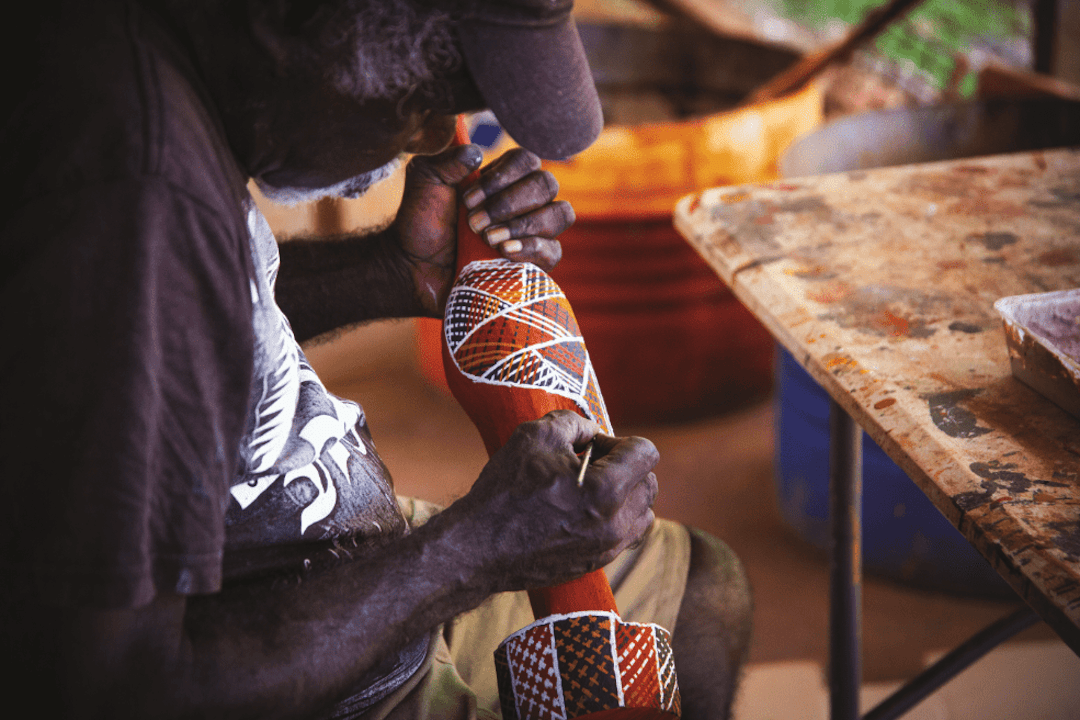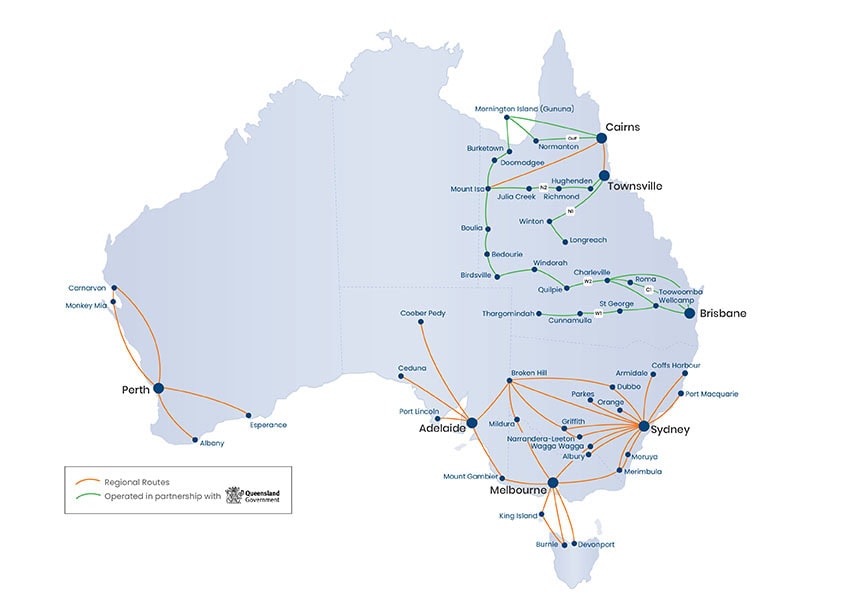The isolation of the Tiwi Islands has helped its people to largely retain their unique Indigenous identity. However, with the arrival of Catholicism in 1911, a brave new world with traditional values and customs took root. Since then, it has continued to evolve and flourish.
On a journey through any new land, there’s usually something that leaps out to the traveller. Almost like an instinct, it offers insight into how the locals live today, with hints about where they came from. On a recent trip to the Tiwi Islands, that thing for me was an old black-and-white photograph at the meticulously curated Patakijiyali Culture Museum on Bathurst Island.
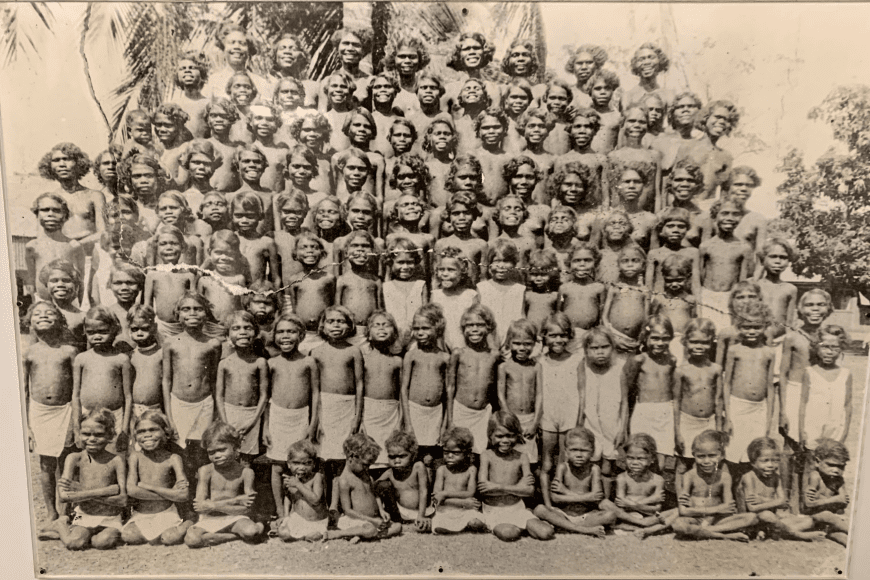
The photo was of 150 Indigenous girls posing eight lines deep. The smallest ones were sitting at the front, with older girls standing at the back on benches. Almost all of them are grinning from ear to ear, with bare chests and a white cloth around their waist. It could be a school photo, but the label beneath tells a different story. “Girls 1930 – some of the 150 wives.”
I’m not sure what to make of this. I didn’t know that little girls as young as three could be a wife in Indigenous culture. But rather than be judgemental, I ask our guide who these young ladies are. The fascinating answer pivots around the life and work of Francis Xavier Gsell, a French Catholic priest born in 1872. His dream was to spread Christ’s word across the planet.
Catholicism and the Tiwi Islands
In 1911, Gsell was granted 4000 hectares on Bathurst Island, where he intended to set up a mission. However it quickly became apparent to him that the Tiwi (literally translated as ‘we people’ or ‘one people’) were fiercely devoted to guarding their isolated existence. This protected them from outside influences and gave them more chance of maintaining their unique culture and traditions. This stance intensified after clashes with Dutch explorers in 1705.
Before Gsell arrived, the Tiwis had come into contact with buffalo hunters and Japanese pearl traders, and so understood the valuable nature of trading with outsiders. Things such as tobacco, knives, tinned food and other local commodities – including young women – had passed amicably between the various groups before.
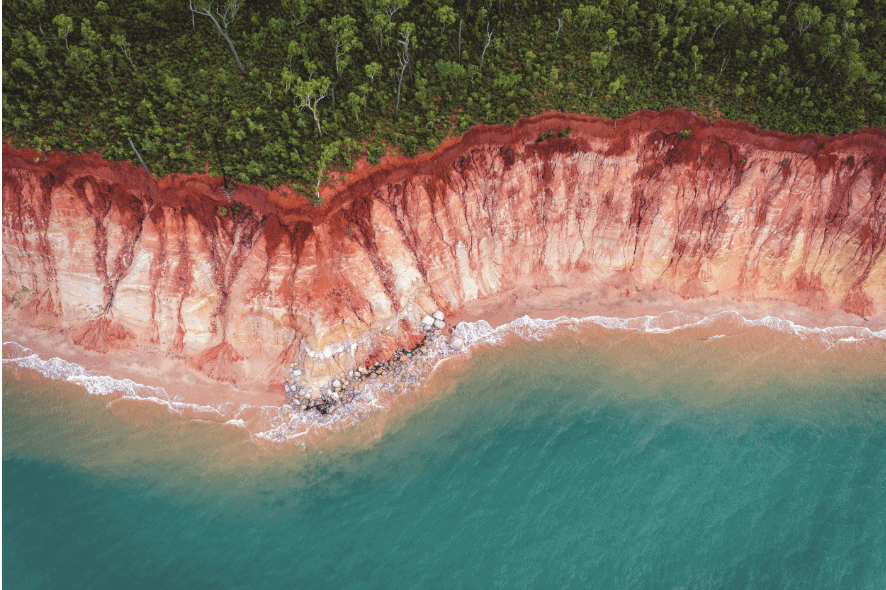
Gsell was a patient man who wanted to understand the Tiwi people. Thus, he devoted his first 10 years on the islands observing them and learning their ways. Due to his long beard he became known as ‘Whiskers’, and the islanders often watched him reading his Bible.
Gsell did not want to interfere with Tiwi rituals and ways of life. However, a teenage girl called Martina came to him one day, begging to be spared from marrying an elder. He had to confront an ethical dilemma: should he protect her?
Gsell initially turned Martina away. But she was chased back by an angry group of men (including the husband-to-be) with a spear through her leg. It was then that he decided to act. He called a meeting with the men and after much negotiation, they left Martina with Father Gsell. In addition, they left blankets, flour, a knife, axe, tobacco and tins of meat.
Gsell gave her a safe harbour, and Martina became known as his first wife. In the spirit of trading, soon many families were bringing their young women to him. The youngest was a four-day old baby. The girls would stay with him under the care of the nuns who also lived on the mission.
They were free to choose their own (baptised) husbands at age 18, as long as traditional family lines were not tampered with as this could threaten something else the Tiwi people fiercely guarded – ancient systems to avoid inbreeding. Tiwi Islanders can play with their brothers and sisters until they hit puberty for instance. After that, they will not speak again or interact with one another until they have grey hair.
Gsell’s lasting impact on the Tiwi Islands
Gsell left the Tiwi Islands in 1938 to be a bishop in Darwin, at which point had 150 ‘wives’. The Tiwi people noticed that the girls were safe with him, and that they were allowed to maintain their traditional ways. And so Catholicism and Tiwi culture gradually merged to create a brave new world.
Today on the two inhabited Tiwi islands of Bathurst and Melville (the other nine are uninhabited), this mixing of two cultures is ever apparent. It’s a place where two unbelievably different worlds spectacularly collided, and a new way of living was born.
Pukumani poles (unique grave posts central in Tiwi mortuary rituals) are often on display near a crucifix. In the traditional church on Bathurst Island, Mary cradles Jesus next to traditional drawings of common Tiwi ‘totems’ (or ‘dreamings’). These include pelicans, crocodiles and turtles.
Tiwi’s inherit these totems from their father. They may not kill or eat this creature – it has a significant relationship with them. Basically, it’s a clever, ancient way of ensuring the survival of species. Each totem also has its associated dance, used to identify Tiwi at ceremonies.
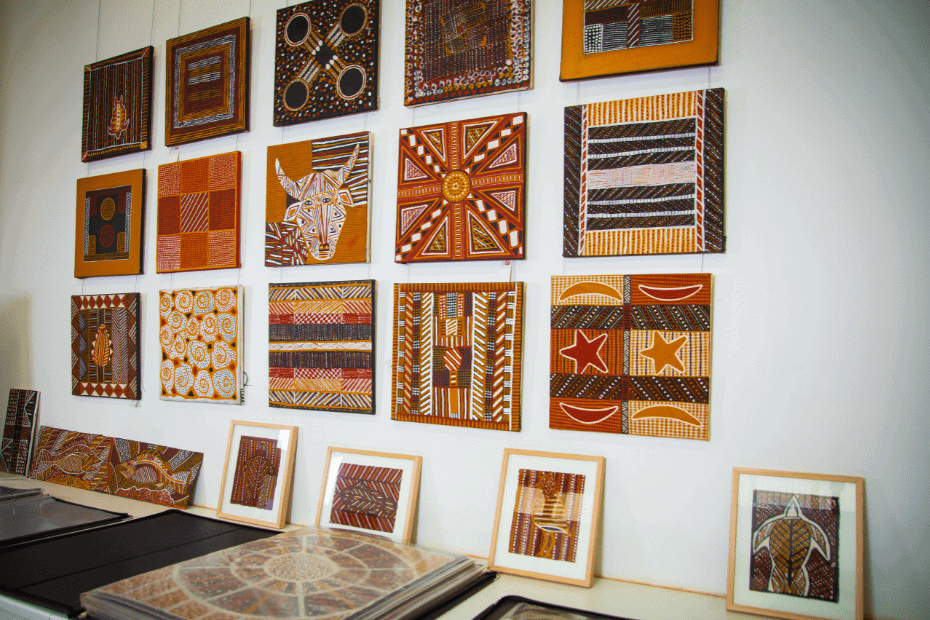
Art and Culture on the Tiwi Islands
Tiwi Islander art generally expands upon traditional motifs drawn from Tiwi people’s understanding of cultural cosmologies. Although, it has definitely evolved in recent years. For instance, in the past only ochre tones were applied to artworks (be they carvings, paintings or screen-prints). Today, bright and even fluorescent colours are used by local artists. This practice is particularly prevalent at Tiwi Design – an art centre that warmly welcomes visitors from all over the world.
I’m on Bathurst Island with my 12-year-old son Reilly. He was eager to come along to this place he’d never heard of. We explore the museum – an incredible collection of ancient, old and more recent history. It covers everything from the Tiwi story of creation to the Japanese bombing of Darwin. We learn that a Japanese pilot crashed on Melville Island after Darwin was hit. We also hear the disturbing details of the Stolen Generation. Also on display are more modern photos and a prized collection relating to the Tiwi obsession with football.
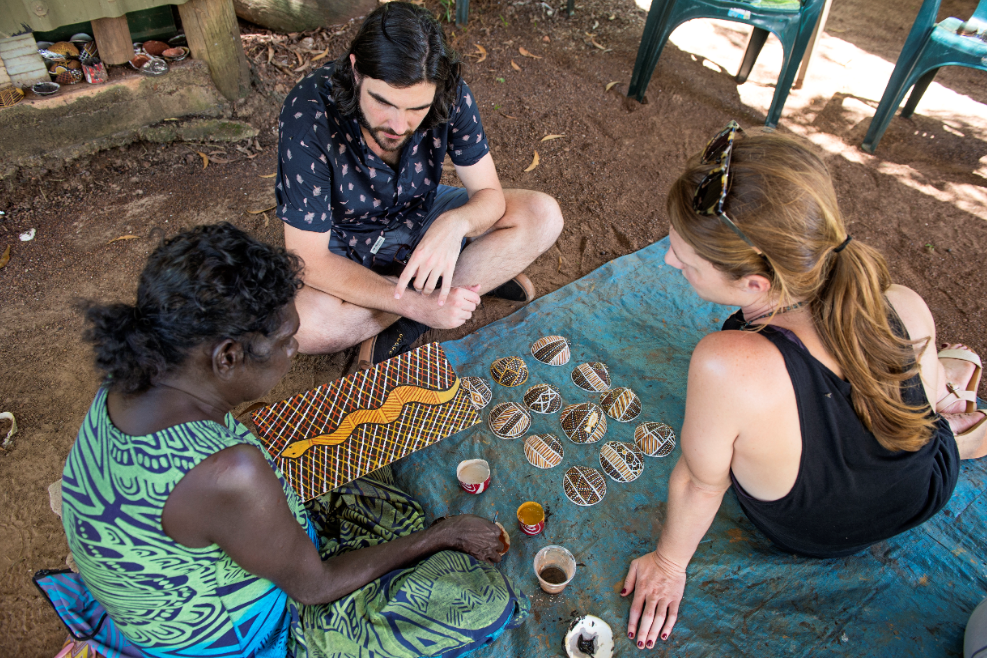
We visit the church, where the wedding in the recent Aussie film starring Miranda Tapsell – Top End Wedding – was filmed. I marvel at the eclectic, visual paradigms of Catholicism and traditional Tiwi life so thoroughly entwined.
Art classes at Tiwi Design
We finish our visit with a screen-printing class hosted by two local artists. The men are gentle, quiet and often cheeky with their explanations and guidance. They show us how to blend colours for the best results and how to apply paint to the designs we’ve chosen. Then we make firm, long, rhythmic sweeping movements across the screens.
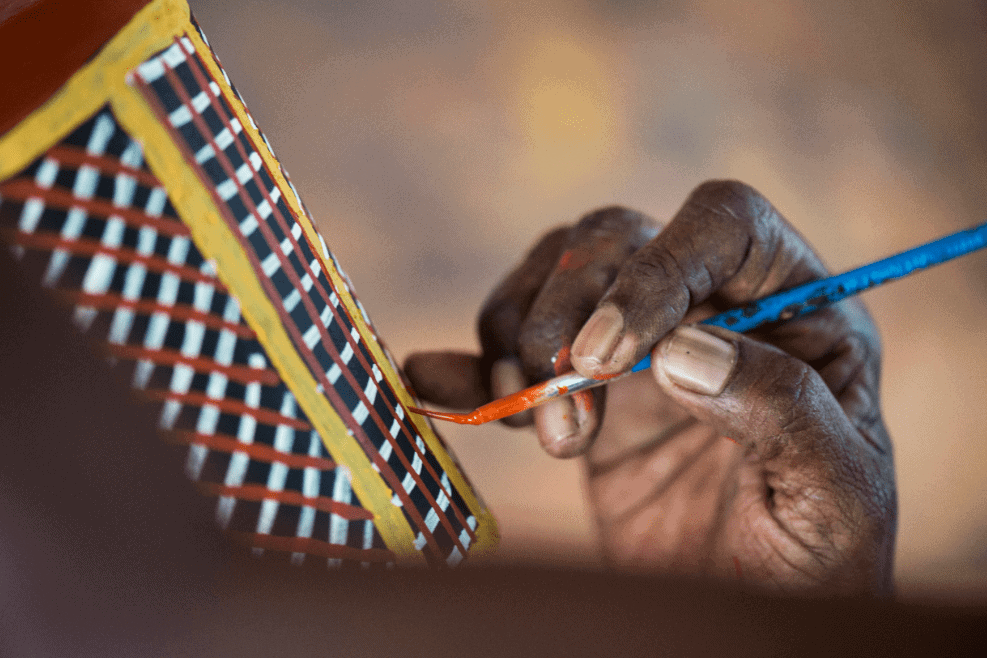
By coincidence, on the day of our visit to the art centre, I am wearing a print of an owl on a navy blue T-shirt that I bought at a market in Hobart years ago. One of the elders, a lady with sparkling brown eyes and a mischievous grin, points to my chest.
“What is this design?” she asks. I look down. “Oh – an owl,” I say. “It’s from Tasmania.” She grins. “That’s my grandmother’s totem!” She gives me a big hug and I hug her back.
Standing next to my son, I work on screen-printing a T-shirt with some colours I love: a fiery orange, hot pink and striking purple, and then we add some white to tone the hues down. One of the few artists now working away on designs with others helps me bring the pelican I’ve chosen to life on the crisp white background.
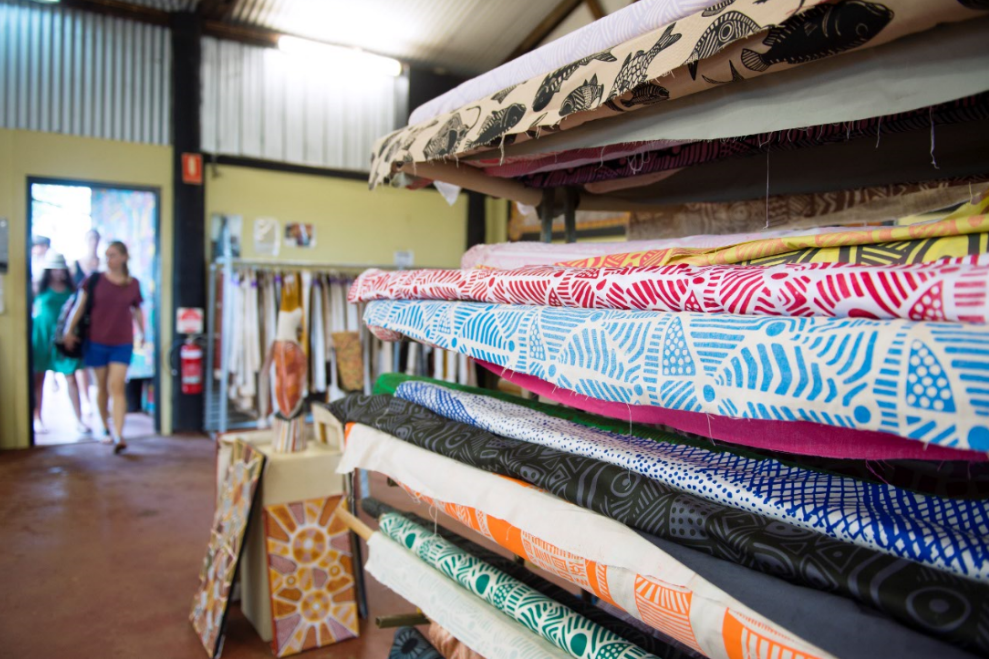
My son works on his design – a turtle within a frame of patterns that I think I have seen on some of the Pukumani poles. Usually he does everything so quickly, but today he seems to be on island time. He follows his teacher’s movements – slow and steady as he slides a wooden bar up and down the screen so that the paint pushes through to create his red, blue and green turtle. Probably not the colours they would have chosen, but hey, no one is judging here.
Reilly receives a reassuring nod and a big grin by one of the elders when the colour has done its work. He’s then shown how to carefully lift the screen off without smudging his art. Then he stretches out the T-shirt, flattens the creases and admires his handiwork. The sea turtle dries in the 35-degree heat before us – a bright, modern incarnation of an ancient symbol that means so much to so many here.
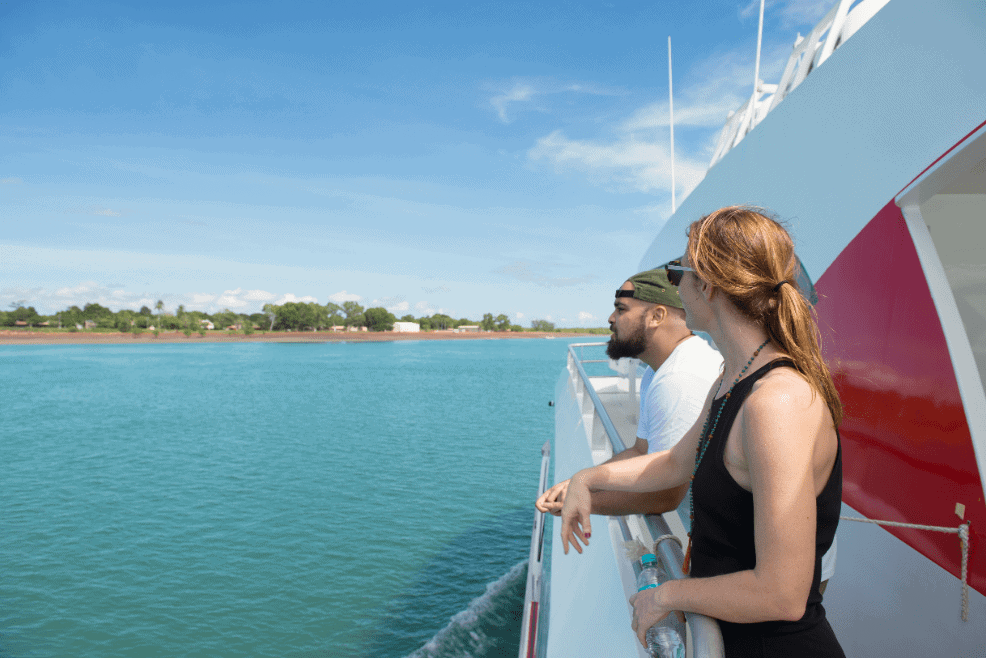
The Tiwi Islands are located 90kms off the coast of Darwin in Australia’s Northern Territory. Only two of the islands are inhabited and can be reached by boat with SeaLink.
You can read more about art on the Tiwi Islands here.

